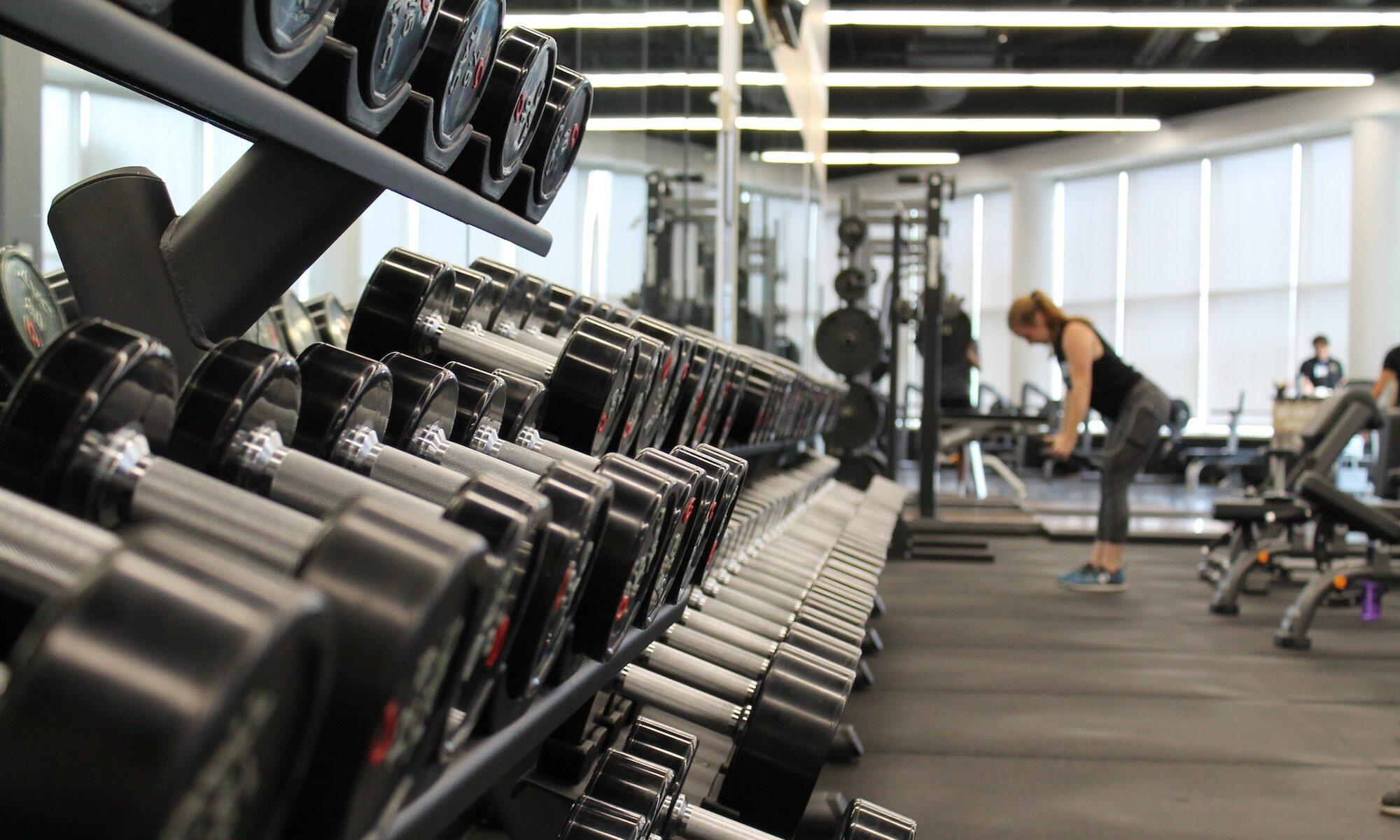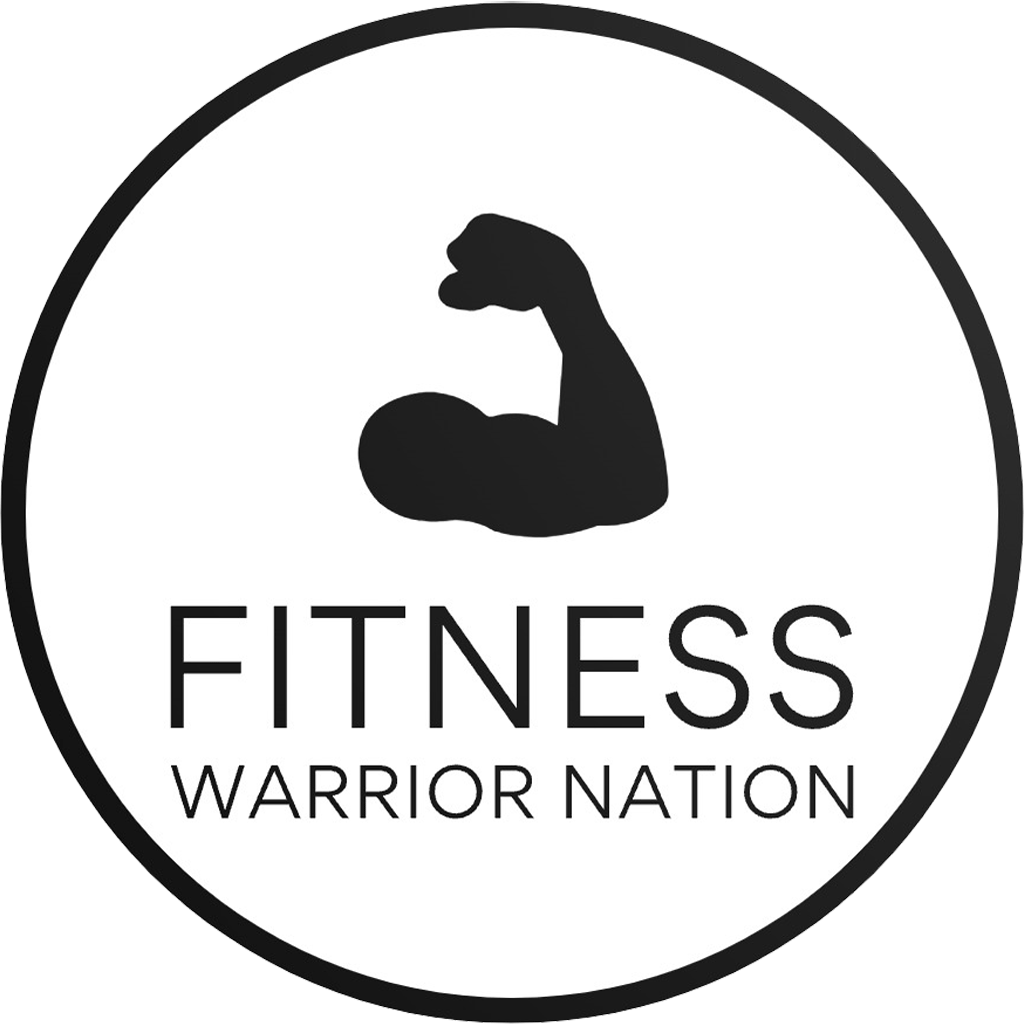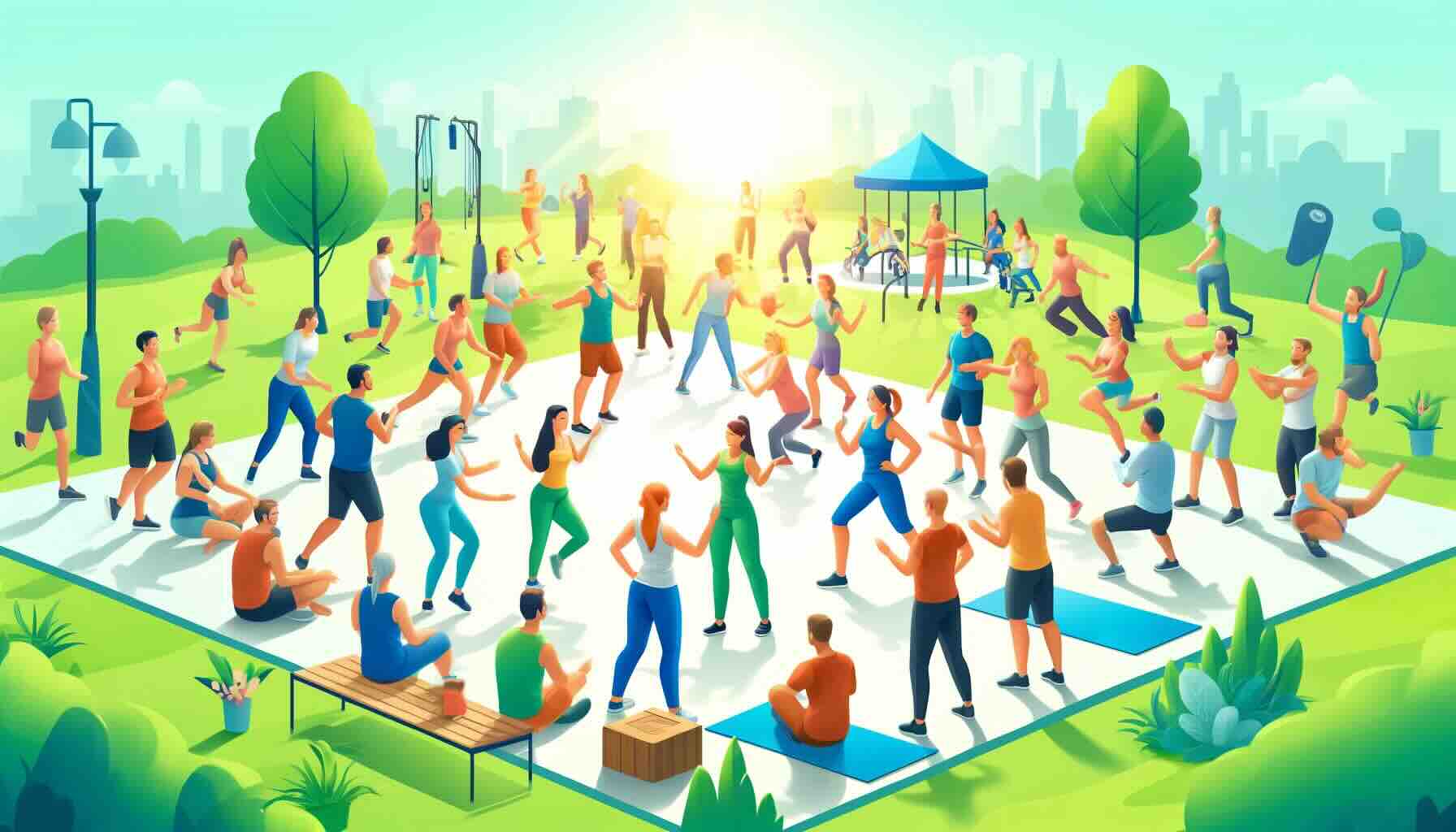Building community through group workouts is possible! Read this article to discover the benefits, factors affecting community building, creating a welcoming environment, building relationships, challenges, measuring success, and inspiring success stories.
In the modern era where technology often isolates individuals, building a sense of community can be challenging. However, group workouts present a unique opportunity to bring people together in a fun and engaging way. Whether it’s a high-energy spin class or a relaxing yoga session, participating in group workouts allows individuals to connect with like-minded individuals who share similar health and fitness goals. By breaking a sweat together, sharing laughter, and encouraging one another, group workouts not only enhance physical well-being but also foster a sense of belonging and camaraderie. So, is building community possible through group workouts? Let’s explore the transformative power of sweating it out with others in an exhilarating fitness setting.
Benefits of Group Workouts
Motivation and Accountability
When you engage in group workouts, you benefit from the motivation and accountability that comes with exercising together. It can be challenging to find motivation to exercise on your own, but when you’re surrounded by a group of like-minded individuals who are also working towards their fitness goals, it becomes easier to stay on track. Seeing others push themselves and achieve their goals can be incredibly inspiring and make you more motivated to push yourself in your own workouts. Additionally, when you commit to attending group workouts, you are held accountable by your fellow participants and are less likely to skip sessions.
Social Interaction
One of the greatest benefits of group workouts is the opportunity for social interaction. Exercising with others creates a sense of camaraderie and allows you to connect with like-minded individuals who share similar interests. It’s a chance to meet new people and form meaningful relationships. Group workouts provide a supportive environment where you can encourage and challenge each other, fostering a sense of belonging and camaraderie that extends beyond the gym or workout class.
Group workouts provide the opportunity to share experiences and support one another on your fitness journeys. Everyone in the group is working towards similar goals, and going through the same workouts and challenges together creates a bond and sense of unity. You can share tips, advice, and encouragement, creating a support network that helps you overcome obstacles and stay motivated. Sharing your successes and setbacks with others who understand can be incredibly empowering and can foster a sense of community.
Factors Affecting Community Building
Group Size and Dynamics
The size and dynamics of a group can significantly impact community building within a workout setting. Larger groups provide a diverse range of perspectives and experiences, which can enrich the community by bringing together individuals with different backgrounds and fitness levels. On the other hand, smaller groups may foster more intimate connections and allow for deeper relationships to form. It’s essential to consider the size and dynamics of the group when aiming to foster a sense of community, as different group dynamics may require unique strategies for community building.
Common Goals and Interests
Shared goals and interests are crucial for building a strong community within a workout group. When individuals have a common purpose, such as striving to improve fitness or train for a specific event, it creates a sense of unity and motivation. It’s important to establish clear goals and communicate them to the group, ensuring everyone is on the same page and working towards a shared objective. This shared purpose brings people together, fosters a sense of belonging, and encourages support and cooperation among group members.
Effective Communication
Effective communication plays a vital role in community building within a workout group. Open and transparent communication allows individuals to express their needs, concerns, and goals. It’s important to create an environment where everyone feels comfortable sharing their thoughts and opinions. Regular group meetings, feedback sessions, and the establishment of clear communication channels can facilitate effective communication within the group. By fostering open and respectful communication, you can create a community where individuals feel heard and valued, further strengthening the bond between group members.
Creating a Welcoming Environment
Inclusive Spaces and Policies
Creating an inclusive environment is essential for building a strong and supportive community within a workout group. It’s crucial to ensure that the physical space where workouts take place is accessible and accommodating to individuals of all abilities. Additionally, implementing inclusive policies that promote fairness, respect, and equality among group members is essential. By prioritizing inclusivity, you create a welcoming and safe environment where everyone feels valued and accepted, fostering a sense of community.
Promoting Diverse Participation
Encouraging diverse participation within a workout group is key to creating a vibrant and inclusive community. It’s important to actively seek out and welcome individuals from different backgrounds, ages, fitness levels, and abilities. This diversity brings new perspectives and experiences to the group, enriching the community and fostering a sense of acceptance and understanding. By promoting diverse participation, you create a community that celebrates individuality and embraces the unique contributions of each member.
Cultivating a Positive Atmosphere
Creating a positive atmosphere is essential for building a strong community within a workout group. It’s important to foster an environment that is uplifting, supportive, and encouraging. This can be achieved through positive reinforcement, celebrations of individual and group achievements, and cultivating a culture of kindness and respect. By creating a positive atmosphere, you create an environment where individuals feel motivated, inspired, and valued, thereby strengthening the sense of community within the group.
Building Relationships within the Group
Encouraging Connections and Friendships
Building relationships and fostering connections within the group is vital for creating a strong community. Encouraging participants to interact with one another and providing opportunities for socialization before, during, and after workouts can help forge friendships and connections. Incorporating partner or team exercises and encouraging participants to work together can also foster collaboration and relationship-building. By actively encouraging connections and friendships, you create a community where individuals feel connected and supported, which enhances their overall workout experience.
Team Building Activities
Organizing team-building activities within the workout group can further strengthen the sense of community. These activities can include challenges that require cooperation, trust-building exercises, or even social events outside of the workout setting. Team-building activities provide an opportunity for group members to get to know one another on a deeper level, foster teamwork, and strengthen the ties within the community. By incorporating such activities, you create a community that is more than just a workout group – it becomes a network of friends who support and motivate one another.
Organizing Social Events
In addition to team-building activities, organizing social events outside of regular workout sessions can help build relationships within the group. These events can range from group hikes or runs to social gatherings and celebrations. Social events provide an opportunity for group members to connect in a more relaxed and casual setting, fostering deeper connections and friendships. By organizing social events, you create opportunities for individuals to interact and bond outside of their regular workouts, enhancing the sense of community and camaraderie.
Group Workouts for Different Communities
Corporate Wellness Programs
Group workouts can be a powerful tool for building community within corporate wellness programs. By offering group fitness classes or organizing wellness challenges, employees can come together in pursuit of their health and fitness goals. This not only promotes teamwork and collaboration within the company but also fosters a sense of community and support. Group workouts within corporate wellness programs provide an opportunity for employees to bond, develop stronger relationships, and support one another’s journey towards improved health and well-being.
Seniors and Retirees
For seniors and retirees, group workouts can be an excellent way to build a sense of community while staying active and healthy. Engaging in group exercise classes specifically designed for older adults allows individuals to connect with others who are in a similar stage of life. The shared experiences and challenges foster a sense of camaraderie and provide emotional support. Group workouts for seniors and retirees not only benefit their physical health but also promote social connections and mental well-being.
Fitness Classes for Mothers
Group workouts geared towards mothers provide a sense of community and support during a time when it may be challenging to find time for exercise. These classes offer an opportunity for mothers to connect with others who understand the unique challenges they face. By exercising together, sharing experiences, and providing support and encouragement, mothers can form strong connections and build a supportive community. Group workouts for mothers not only improve their fitness but also promote mental well-being and reduce feelings of isolation.
Sports Teams and Clubs
Group workouts are integral to community building within sports teams and clubs. Team practices and training sessions allow athletes to bond, collaborate, and work towards a shared goal. The sense of belonging and teamwork created through group workouts in sports teams and clubs fosters strong relationships and a tight-knit community. These communities often extend beyond the workout setting, as teammates become friends who support and motivate one another on and off the field.
Challenges and Solutions
Overcoming Individual Differences
Individual differences, such as varying fitness levels, abilities, and goals, can present challenges to community building within group workouts. To overcome these challenges, it’s important to foster an inclusive and supportive environment. Provide modifications and options for exercises to accommodate different fitness levels and abilities. Encourage participants to celebrate their individual progress and support one another regardless of individual differences. By embracing and respecting these differences, you create a community that values each member’s unique journey and contributions.
Managing Conflicts
Conflicts may arise within a workout group, but effective conflict management is crucial for maintaining a positive and supportive community. Encourage open and respectful communication among group members to address conflicts promptly and constructively. Provide a platform for individuals to voice their concerns and work towards resolutions. It may also be helpful to establish guidelines or policies for addressing conflicts within the group. By addressing conflicts effectively, you can prevent them from escalating and maintain a harmonious and supportive community.
Adapting to Varying Fitness Levels
Varying fitness levels within a workout group can pose challenges to community building, as individuals may have different capabilities and goals. To overcome this, offer modifications and progressions for exercises to accommodate different fitness levels. Emphasize the value of each individual’s contribution, regardless of their fitness level. Encourage participants to support and celebrate one another’s achievements, fostering a culture of inclusivity and support. By adapting to varying fitness levels, you create a community where everyone feels empowered and motivated to reach their personal fitness goals.
Measuring Community Building
Surveys and Feedback
Surveys and feedback can provide valuable insights into the sense of community within a workout group. Regularly collect feedback from participants to assess their satisfaction, sense of belonging, and overall community experience. Surveys can include questions about the quality of relationships within the group, the level of support received, and suggestions for improvement. By actively seeking feedback, you can identify areas for growth and implement strategies to enhance community building within the group.
Participation Rates
Participation rates can serve as an indicator of community building within a workout group. High participation rates suggest that individuals feel connected and engaged within the community. Monitor attendance and engagement levels to determine the success of community-building efforts. If participation rates are consistently low, it may indicate a need to evaluate and adjust strategies to better foster a sense of community within the group.
Retention and Member Satisfaction
Retention rates and member satisfaction are additional measures of community building. High retention rates indicate that individuals feel a strong sense of community, as they continue to participate in the group over an extended period. Regularly assess member satisfaction through feedback surveys or meetings. If satisfaction levels are low or retention rates are declining, it may indicate a need to re-evaluate community-building strategies and make adjustments to better meet the needs of group members.
Success Stories
Community Bonds Formed
Numerous success stories demonstrate the power of group workouts in building strong communities. Individuals who have participated in group workouts often report developing deep connections with fellow participants, forming friendships that extend beyond the workout setting. They highlight the supportive and motivating environment fostered by the group, attributing their personal growth and success to the community they have become a part of. The bonds formed through group workouts have lasting impacts on individuals’ lives, providing them with a sense of belonging and a support network that extends far beyond physical fitness.
Positive Impact on Mental Health
Group workouts have been shown to have a positive impact on mental health. The sense of community and support within a workout group can provide individuals with emotional support, reducing feelings of loneliness and isolation. Regular exercise releases endorphins, which can improve mood and reduce symptoms of depression and anxiety. Engaging in group workouts allows individuals to connect with others, fostering a sense of belonging and improving overall mental well-being.
Improved Health and Fitness Outcomes
Participating in group workouts leads to improved health and fitness outcomes. The motivation, support, and accountability provided by the community within a workout group contribute to individuals consistently engaging in exercise and maintaining a healthy lifestyle. By supporting each other’s goals and providing encouragement, participants are more likely to push themselves and achieve better results. The sense of community and camaraderie created through group workouts fosters an environment that promotes long-term success in achieving health and fitness goals.
Conclusion
Group workouts have proven to be a powerful tool for building communities. The motivation, accountability, and social interaction they provide contribute to the sense of belonging and support that individuals experience within a workout group. Factors such as group size, common goals, and effective communication play a vital role in community building. By creating a welcoming environment, fostering connections, and organizing social events, relationships within the group are strengthened. Group workouts benefit different communities, including corporate wellness initiatives, seniors and retirees, mothers, and sports teams. Although challenges may arise, by overcoming individual differences, managing conflicts, and adapting to varying fitness levels, a strong community can be built. Measuring community building through surveys, participation rates, and member satisfaction helps track progress and identify areas for improvement. The success stories of community bonds formed, positive impact on mental health, and improved health and fitness outcomes highlight the transformative power of group workouts. Ultimately, group workouts have the potential to go beyond physical fitness, creating a sense of community that enriches individuals’ lives and enhances their overall well-being.


